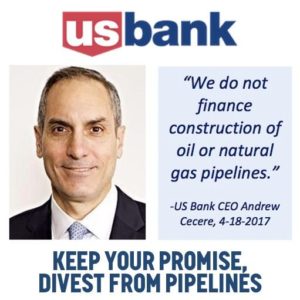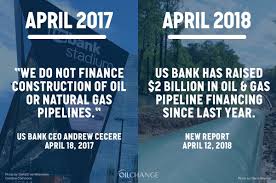// Resource
How to Build a Digital Action Packet
A Digital Action Packet can be an effective tool for inviting members of your organization or allied organizations to elevate your narrative and spark a conversation online. This how-to guide walks through the elements of a strong, narrative-centered digital action packet. Created by Hattaway Communications and Narrative Initiative.
How to Build a Digital Action Packet
Digital Action Packets can help you leverage events—such as rallies, protests, news releases or program milestones—to drive public awareness and spread positive narratives. They help you accomplish this by equipping your peer organizations, members, and allies to amplify your message and specific calls to action on social media.
To assemble a Digital Action Packet, we recommend you include the elements listed below. Throughout this template, we use an example Digital Action Packet from MN350 to illustrate each element. In this instance, MN350 wanted other members of the Our Minnesota Future coalition to help draw attention to a planned action at U.S. Bank headquarters, where MN350 was sending off a delegation of indigenous water protectors traveling to U.S. Bank’s annual shareholders meeting in New Mexico. You can view a PDF of the original MN350 Digital Action Packet by using this link.
Not every packet will be the same; you can select the most useful elements from this toolkit to suit your needs.
Elements of a Digital Action Packet
Title or logo of organization. Insert your organization’s logo or name at the top of the toolkit to ensure your partners know which organization is driving the action.
MN350 example: “MN 350 Digital Action Toolkit”
Title of event or call to action. Be sure to clearly specify which event or call to action you are organizing this toolkit for.
MN350 example: “For MN 350 U.S. Bank Action”
Date of the actual event, as well as the social media launch. Let other partners know when you would like them to start posting on social media. Highly coordinated social media efforts have higher visibility and impact, as they are more likely to trend.
MN350 example: “Launch of social media campaign: 8:00 a.m. Monday, April 16”
Relevant links. Include any relevant links partners should circulate or highlight in their posts. These could include Facebook pages for events you want people to attend, news articles you want to highlight, or simply content on your organization’s own social media accounts.
MN350 examples:
Background. In one or two paragraphs, provide key background information that partners should know about the event or call to action. Use this space to show partners how this event supports shared narratives. In this case, MN350 highlights Minnesota values, a narrative frame they were attempting to move into the public conversation with other coalition partners.
MN350 example: “A year ago, U.S. Bank’s CEO said it would discontinue investing in dirty oil and gas pipelines. Since then, a new report has found, U.S. Bank actually has raised more than $2 billion for oil and gas pipelines. U.S. Bank, a Minnesota company, is out of line with Minnesota values.
MN350 supporters will gather Monday morning at bank headquarters to send off a delegation of indigenous water protectors traveling to U.S. Bank’s annual shareholders meeting April 17 in New Mexico. The water protectors will bring with them water collected from lakes, rivers and streams. They will join water protectors from other states carrying a demand that U.S. Bank keep its word and respect our land, air, and water by divesting from fossil fuel companies.”
What you’re asking for. Clearly state what you want partners to do to support your social media campaign. Be explicit. State any specific goals for what this action is working towards, such as gaining 100 followers on Twitter or reaching 1,000 attendees on a Facebook event.
MN350 example: “Help us send off the water protectors. Beginning at 8:00 a.m. Monday, April 16, please retweet and share MN350’s tweets and Facebook posts. Please also tweet and post directly from your accounts and invite supporters to do likewise, using the suggested messages below.”
Narrative strategy and key values. Provide one or two sentences about the narrative you are looking to drive in your posts, so that other groups can elevate it as well.
MN350 example: “Minnesotans care about the land, air, and water, and we believe in the importance of honesty.”
Sample tweets and hashtags. List hashtags for the event or your organization, as well as any hashtags you’re using with partners. (In this example, the entire Our Minnesota Future coalition was working to elevate the hashtag #MNValues.) Specify any organization or entity you would like members to direct, or “tag,” their tweets to, such as @usbank.
MN350 examples: “#MNPeople #MNValues #KeepYourPromise Please tag U.S. Bank in your posts: @U.S. Bank on Facebook @usbank on Twitter”
Sample tweets that reinforce the positive narratives you want to drive. You can provide pre-populated Twitter forms through tools such as www.clicktotweet.com. This makes your toolkit easily actionable for your partners, increasing the likelihood that they assist your digital action. Remind partners that they can also adjust the language in the tweets as they see fit to match their own voice and mission.
MN350 example: “Despite its pledge to divest, @USBank keeps financing destruction of communities & climate by bankrolling pipeline companies. What could we have done with that $2bil to build community and care for our land and water instead? #MNValues #MNPeople #KeepYourPromise bit.ly/2Hh0L5l”
Sample Facebook posts. Craft sample Facebook posts that reinforce positive narratives you want to drive. Because Facebook posts are not constrained by character limits, you can include additional background or links to news articles. Don’t forget that Facebook uses hashtags and “tags,” too! List all relevant hashtags for the event or your organization and OMF hashtags such as #MNValues. Clearly specify any organization or entity you would like members to direct, or “tag,” their tweets to.
MN350 example: “@U.S. Bank’s CEO promised in 2017 to protect our land & water and stop financing dirty pipeline projects. But a new report reveals the bank actually has invested $2 billion since then to bankroll the company behind the Dakota Access Pipeline. Water protectors depart today for the annual shareholder meeting in N.M. to tell executives: We expect our Minnesota companies to care for the land & water like we care for each other. #KeepYourPromise #MNPeople http://priceofoil.org/2018/04/12/empty-promise-us- bank-continues-pipeline-finance/”
Provide sample images for Twitter, Facebook or other social media platforms. Another way to increase engagement is to include graphics that are customized for your event or call to action, including any relevant hashtags. Make sure to specify whether a certain graphic should be used on a particular platform, such as Instagram.
MN350 examples:

Resource Metadata
Collections
Type
- Guide
Related Narrative Initiative Project
Topics
Produced by
- Hattaway Communications
- Narrative Initiative




